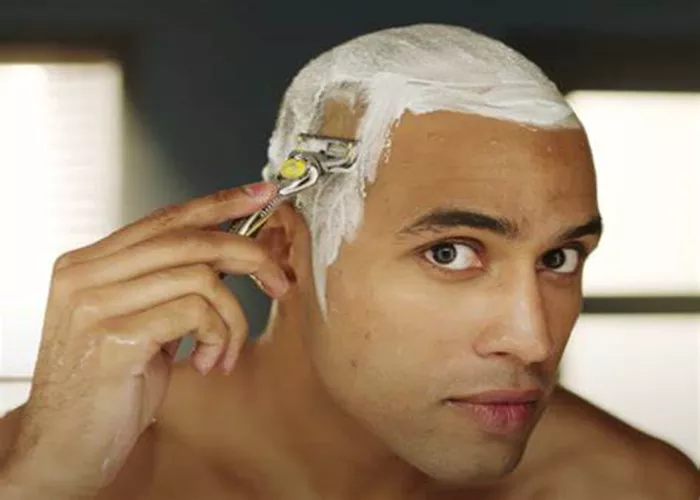Hair fall is a common concern that affects millions of people worldwide. Whether due to genetics, stress, hormonal changes, or environmental factors, losing hair can be distressing. Many people consider shaving their heads as a potential solution, believing it might reduce hair fall or even promote healthier hair growth. But does shaving your head actually help with hair loss? Let’s explore the science behind hair growth, the effects of shaving, and whether this drastic measure can truly make a difference.
Understanding Hair Growth and Hair Fall
Before diving into whether shaving helps with hair fall, it’s essential to understand how hair grows and why it falls out. Hair growth occurs in cycles, consisting of three main phases:
Anagen Phase (Growth Phase): This is the active growth period, lasting anywhere from two to seven years. The longer this phase, the longer your hair grows.
Catagen Phase (Transition Phase): A short phase lasting about two weeks, where hair follicles shrink and detach from the blood supply.
Telogen Phase (Resting Phase): Hair doesn’t grow during this phase but remains in the follicle. After about three months, the hair sheds, and the cycle restarts.
Hair fall becomes a problem when the shedding rate exceeds the regrowth rate or when hair follicles miniaturize (as in male or female pattern baldness). Common causes of excessive hair fall include:
- Genetics (Androgenetic Alopecia)
- Hormonal Imbalances (Thyroid disorders, PCOS, postpartum changes)
- Nutritional Deficiencies (Iron, Vitamin D, Protein)
- Stress (Physical or Emotional)
- Scalp Conditions (Dandruff, Psoriasis, Fungal Infections)
- Harsh Hair Treatments (Chemical Styling, Excessive Heat)
Given these factors, does shaving the head have any real impact on hair fall?
The Myth and Reality of Shaving for Hair Growth
A common belief is that shaving your head makes hair grow back thicker, stronger, and healthier. This idea likely stems from observing stubble after shaving—since the cut hair has a blunt tip, it may appear coarser initially. However, shaving does not change the thickness, color, or growth rate of hair.
Hair growth is determined by the follicles beneath the scalp, not the hair shaft above it. Shaving only removes the visible part of the hair, leaving the follicle untouched. Therefore, shaving cannot:
- Increase Hair Density (The number of follicles is genetically determined.)
- Alter Hair Texture (The natural curl or thickness remains the same.)
- Stop Genetic Hair Loss (If follicles are miniaturizing due to DHT, shaving won’t prevent it.)
However, shaving may create an illusion of reduced hair fall because shorter hairs are less noticeable when they shed. Long hairs are more visible on pillows, combs, and shower drains, making hair fall seem more severe.
Potential Benefits of Shaving for Hair Health
While shaving doesn’t directly reduce hair fall, it can offer some indirect benefits:
Eliminates Damage from Styling
Frequent heat styling, chemical treatments, and tight hairstyles can weaken hair and cause breakage. Shaving removes damaged ends, allowing new hair to grow without previous stress.
Easier Scalp Care
A shaved head makes it easier to apply treatments directly to the scalp. Medicated shampoos, oils, and serums penetrate better without long hair in the way. This can help with conditions like dandruff or scalp inflammation that contribute to hair fall.
Psychological Relief
For those experiencing significant thinning, shaving can be empowering. Instead of stressing over shedding strands, a clean-shaven look can boost confidence and eliminate the anxiety of watching hair fall daily.
Uniform Growth
If hair loss is patchy (due to alopecia areata or scarring alopecia), shaving can create a more even appearance while treatments take effect.
When Shaving Doesn’t Help with Hair Fall
Despite the possible benefits, shaving is not a cure for most hair loss conditions. It does not:
- Reverse Balding: If follicles are inactive (as in advanced androgenetic alopecia), shaving won’t bring them back.
- Treat Underlying Causes: Nutritional deficiencies, hormonal imbalances, or autoimmune conditions require medical intervention.
- Prevent Future Hair Loss: Without addressing the root cause, hair will continue thinning even after shaving.
Alternative Solutions for Reducing Hair Fall
If shaving isn’t a permanent solution, what actually helps with hair fall? Here are some evidence-based approaches:
Medical Treatments
- Minoxidil (Rogaine): A topical treatment that prolongs the anagen phase.
- Finasteride (Propecia): An oral medication that blocks DHT (a hormone linked to male pattern baldness).
- PRP Therapy: Platelet-rich plasma injections stimulate dormant follicles.
Lifestyle Changes
- Balanced Diet: Adequate protein, iron, zinc, and vitamins (Biotin, Vitamin D) support hair health.
- Stress Management: Yoga, meditation, and proper sleep reduce stress-induced shedding.
- Gentle Hair Care: Avoiding tight hairstyles, excessive heat, and harsh chemicals prevents breakage.
Advanced Procedures
- Hair Transplant: Surgically relocating healthy follicles to balding areas.
- Low-Level Laser Therapy (LLLT): Devices like laser combs may stimulate growth in some cases.
Conclusion
Shaving your head does not directly reduce hair fall or stimulate new growth. However, it can offer psychological relief, minimize the appearance of shedding, and make scalp treatments more effective. For long-term solutions, addressing the underlying cause—whether through medication, lifestyle changes, or professional treatments—is essential.
If you’re considering shaving, weigh the pros and cons. For some, it’s a liberating choice that simplifies hair care. For others, medical interventions may be necessary to restore hair health. Either way, consulting a dermatologist can help determine the best approach for your specific condition.
Ultimately, hair fall is a complex issue, and while shaving may provide temporary aesthetic benefits, it’s not a standalone cure. Understanding your hair’s needs and seeking appropriate treatments will yield better, lasting results.
Related Topics:
- Is There Any Way to Prevent Hair Loss?
- Will Iron Help My Hair Grow Back? A Comprehensive Guide
- Is a Steam Straightener Bad for Your Hair?


